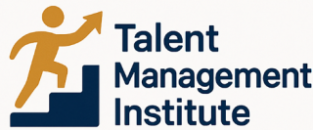
Understanding Leadership in Talent Management
A Comprehensive Overview of Leadership within Talent Management
When discussing talent management, understanding leadership's role becomes crucial. In thriving organizations, leadership is often seen as the driving force behind team success. This is not just about having a title or position, but about embodying qualities and skills that inspire a positive work environment and drive towards achievements. Leadership is multi-dimensional in its application. Effective leaders wield influence through their communication skills, emotional intelligence, and problem-solving abilities. These aren't just buzzwords to embellish a resume; these are essential leadership qualities required for successful navigation in an organizational setting. These qualities help shape a strong leader with the capacity to adapt their leadership style to meet various team dynamics. Investing years of experience into honing effective leadership, organizations witness the transformative power of great leaders on team dynamics. This directly ties into fostering a work environment conducive to innovation and growth. Effective communication plays a critical role in ensuring that team members feel heard and valued, thus fueling their motivation and drive. Incorporating leadership adjectives into corporate structures enhances the clarity and resonance of roles within teams. The adoption of these leadership adjectives, which will be explored in a deeper context, helps hiring managers identify potential leaders. These adjectives provide insights into preferred qualities that correspond to the organization's vision. To conclude, talent management intertwined with leadership principles propels organizations towards achieving sustainable success and fosters an environment where every team member can thrive.Key Adjectives for Describing Leadership
Descriptive Words to Enhance Leadership Profiles
Communicating the qualities of leadership effectively requires choosing the right adjectives that accurately portray a leader's capabilities in talent management. These words not only help in showcasing the skills and attributes of potential leaders but also paint a clear picture for hiring managers and team members. Let’s dive into some key adjectives that can be used to describe leadership qualities:- Innovative: Great leaders inspire and foster innovation. Highlighting a leader’s ability to generate creative solutions can have a positive impact on the organization's growth and problem-solving approach.
- Empathetic: An empathetic leader uses emotional intelligence to create a positive work environment, where team members feel valued and understood.
- Decisive: Leaders who are decisive make quick, effective decisions, steering their teams towards success and maintaining momentum.
- Resilient: Leadership often involves navigating challenges. Resilient leaders maintain composure and guide their teams effectively through tough situations.
- Communicative: Effective communication skills are invaluable. A communicative leader ensures clarity and keeps all team members on the same page, promoting transparent and open dialogue.
- Visionary: Visionary leaders are forward-thinking and inspire their teams towards a shared future, driving change and strategic direction.
- Adaptable: An adaptable leader handles change with ease, demonstrating flexibility in their leadership style and adjusting strategies as necessary for the benefit of the team.
Impact of Leadership Adjectives on Team Dynamics
Role of Descriptive Language in Influence
The impact of leadership adjectives on team dynamics cannot be overstated. The language used by leaders to describe their capabilities and experiences shapes the perceptions and behaviors of team members. Adjectives highlighting leadership qualities are not just mere descriptors; they carry with them the potential to create a positive work environment, foster effective communication, and inspire innovation and success.
A leader who is described as "empathetic" may inspire cooperative communication skills among team members, encouraging an open and understanding environment. When a leader is labeled "decisive," it can promote a decisive organizational culture that emphasizes quick, effective problem solving. Similarly, adjectives such as "visionary" enable a work culture that prioritizes forward-thinking innovation and growth.
Furthermore, the consistent use of leadership adjectives can help in crafting a leadership resume that resonates with hiring managers, showcasing years of experience in a manner that aligns with desired leadership styles. When team members frequently hear about a leader's "integrity" or "adaptability," they are more likely to emulate these qualities in their work, increasing overall team cohesion and functionality.
Adjectives not only help in establishing authority and trust but also in enhancing emotional intelligence within an organization. By describing a leader's capability to manage emotions and foster a positive work environment, team members are more inclined to engage in self-regulation and proactive teamwork.
For organizations keen on maximizing talent and balancing skill utilization, understanding the key role that leadership language plays can be a pivotal asset. To delve deeper into this topic, explore how maximizing talent balancing can further amplify effective leadership in diverse settings. This integration of language and practice ultimately paves the way for highly effective leaders who inspire and guide their teams to achieve their highest potential.
Adjectives that Foster Innovation and Growth
Fostering Innovation and Organizational Growth
To foster innovation and drive organizational growth, it’s essential to master the art of applying the right leadership adjectives. These adjectives not only define how a leader is perceived but also shape the work environment, steering it towards positive outcomes. When leaders embrace qualities that inspire and motivate, they create a fertile ground for innovation and success. Incorporating adjectives that highlight effective communication and emotional intelligence can significantly enhance a leader’s ability to encourage creativity and out-of-the-box thinking among team members. Terms like "visionary," "inspirational," and "innovative" help portray a leader who not only spearheads projects but also guides others to think independently and creatively. Here’s how specific leadership qualities can foster innovation:- Visionary: Leaders with a visionary trait often drive organizations toward new avenues and possibilities, paving the way for growth and modernization.
- Empathetic: This quality ensures leaders understand and value the team's perspectives, thereby nurturing an inclusive and diverse environment where fresh ideas thrive.
- Adaptable: Adaptability allows leaders to adjust to new challenges and embrace change, enabling teams to remain competitive in today's fast-paced work environment.
- Collaborative: Encouraging collaboration leads to a cohesive effort in problem-solving, which can spur innovation and improve outcomes.
Balancing Leadership Adjectives for Diverse Teams
Striking the Right Balance for Diverse Teams
In the multifaceted world of talent management, the variety within teams presents both a challenge and an opportunity for leaders. Diverse teams bring a wide array of experiences, perspectives, and skills which can significantly enrich the work environment. However, it requires a balanced approach to harness these differences effectively. To successfully manage a diverse group, leaders need to adopt a leadership style that balances various leadership qualities. It's about embracing leadership adjectives that are beneficial across the board while remaining adaptable to the dynamic needs of each team member. Here’s how leaders can strike the right balance:- Adaptability: Effective leaders cultivate an environment where adaptability is nurtured. This means using flexible leadership adjectives to describe your qualities on a resume, such as "innovative", "open-minded", and "resourceful". These qualities resonate across different cultures and personalities.
- Effective Communication: At the core of managing diversity in teams is effective communication. Leaders who prioritize clear, positive interactions foster positive work environments. Successful leaders utilize adjectives like "articulate" and "empathetic," which are crucial for bridging gaps in understanding.
- Encouraging Innovation and Problem Solving: Leadership qualities such as "inspirational" and "supportive" encourage team members to express creativity and engage in problem-solving activities. Leaders who inspire a positive work culture, advocate for innovation and help facilitate growth among team members.
Practical Application of Leadership Adjectives
Applying Leadership Adjectives in Real-World Scenarios
Applying the right leadership adjectives is essential for cultivating an effective and positive work environment. In practice, these adjectives are not merely words on a page or a resume; they are qualities that great leaders should embody to inspire their team members towards success. It's important to recognize that leaders with years of experience have a profound influence on their teams by choosing adjectives that align with their unique leadership style. Here’s how adjectives that were discussed earlier can shape your work environment effectively:- Effective Communication: By fostering open and transparent communication, leaders help bridge gaps among team members. This approach leads to a cooperative work dynamic and smooth problem solving.
- Inspiration & Positivity: Leaders who exemplify positive adjectives spark motivation within their team, encouraging innovation and sustainable growth. Leaders influenced by positivity can overcome challenges, leading to further success.
- Emotional Intelligence: Understanding and managing emotions significantly impact team cohesion. Leaders who express empathy and harness emotional intelligence, build trust, and improve communication skills.













